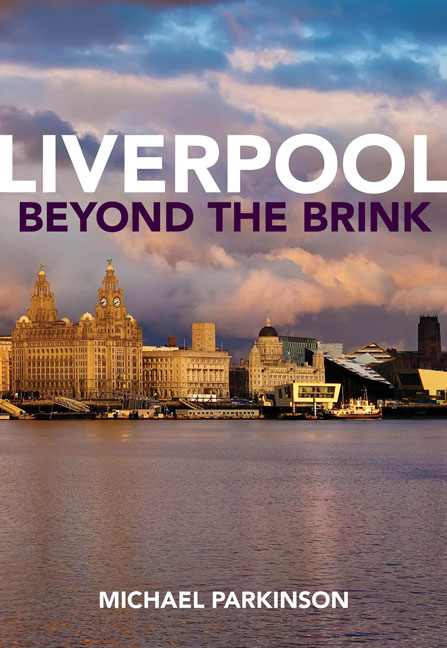Book contents
- Frontmatter
- Dedication
- Contents
- Acknowledgements
- 1 What is the Liverpool story and why does it matter?
- 2 Liverpool goes on – but pulls back from – the brink, 1973–88
- 3 Liverpool begins to become normal, 1988–98
- 4 The rise of the aspiring premier European city, 1998–2010
- 5 Continuing ambition in an age of austerity, 2010–19 99
- 6 The state of Liverpool's economy today
- 7 Liverpool beyond the brink: what are the lessons and what is to be done?
- Index
3 - Liverpool begins to become normal, 1988–98
- Frontmatter
- Dedication
- Contents
- Acknowledgements
- 1 What is the Liverpool story and why does it matter?
- 2 Liverpool goes on – but pulls back from – the brink, 1973–88
- 3 Liverpool begins to become normal, 1988–98
- 4 The rise of the aspiring premier European city, 1998–2010
- 5 Continuing ambition in an age of austerity, 2010–19 99
- 6 The state of Liverpool's economy today
- 7 Liverpool beyond the brink: what are the lessons and what is to be done?
- Index
Summary
The 1990s were a crucial bridge between the confusion and chaos of the 1980s and the European ambitions of the 2000s. Several key features marked the period. First, the Liverpool Labour Party moved further away from the Militant legacy towards the political centre as it tried to distance itself from the bad old days, although there remained two wings within the party. Secondly, there was a significant effort to deal with the weaknesses of the local authority – even though this was not wholly successful. Thirdly, there was a growing recognition of the need for partnership working between the public and private sectors, which was encouraged by both national government and the European Commission. Fourthly, there was a growing recognition, encouraged by Europe, of the importance of scale and the need for Liverpool to work at the wider city region level. Finally and most significantly, there was a growing recognition of the importance of the city centre economy to the future of Liverpool and increased efforts to improve its performance.
Putting Humpty Dumpty together again – four big city initiatives
A key feature of the Liverpool renaissance story is how the economic, physical and social disintegration of the city was gradually tackled, if not resolved, in the 1990s and 2000s. Slowly during this period the different parts of the city, which had lost their economic rationale and had been fragmented by the loss of population during the 1970s and 1980s, were gradually tied together into a more coherent place physically.1 During the 1990s the city's political, administrative and business leadership began to recognise the need to regenerate the declining city centre. Given the scale of collapse in the manufacturing and port sectors, the potential of business, professional, financial, retail, and tourism and knowledge sectors was an obvious – but previously neglected – area to exploit. This growing awareness can best be illustrated by four major initiatives that helped to transform the debate about Liverpool's economy and to significantly improve the performance of the city centre in particular. They were Liverpool City Challenge, the Merseyside Development Corporation, Speke Garston Development Company and Regeneration Partnership, and the European Commission's Objective 1 Programme. They were the keys to the successes of the 1990s.
- Type
- Chapter
- Information
- Liverpool Beyond the BrinkThe Remaking of a Post-Imperial City, pp. 45 - 76Publisher: Liverpool University PressPrint publication year: 2019



